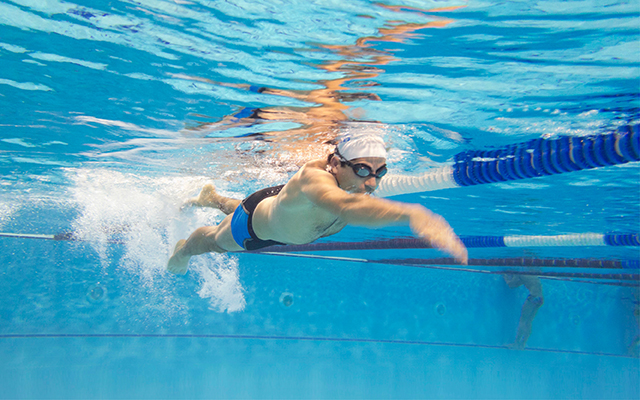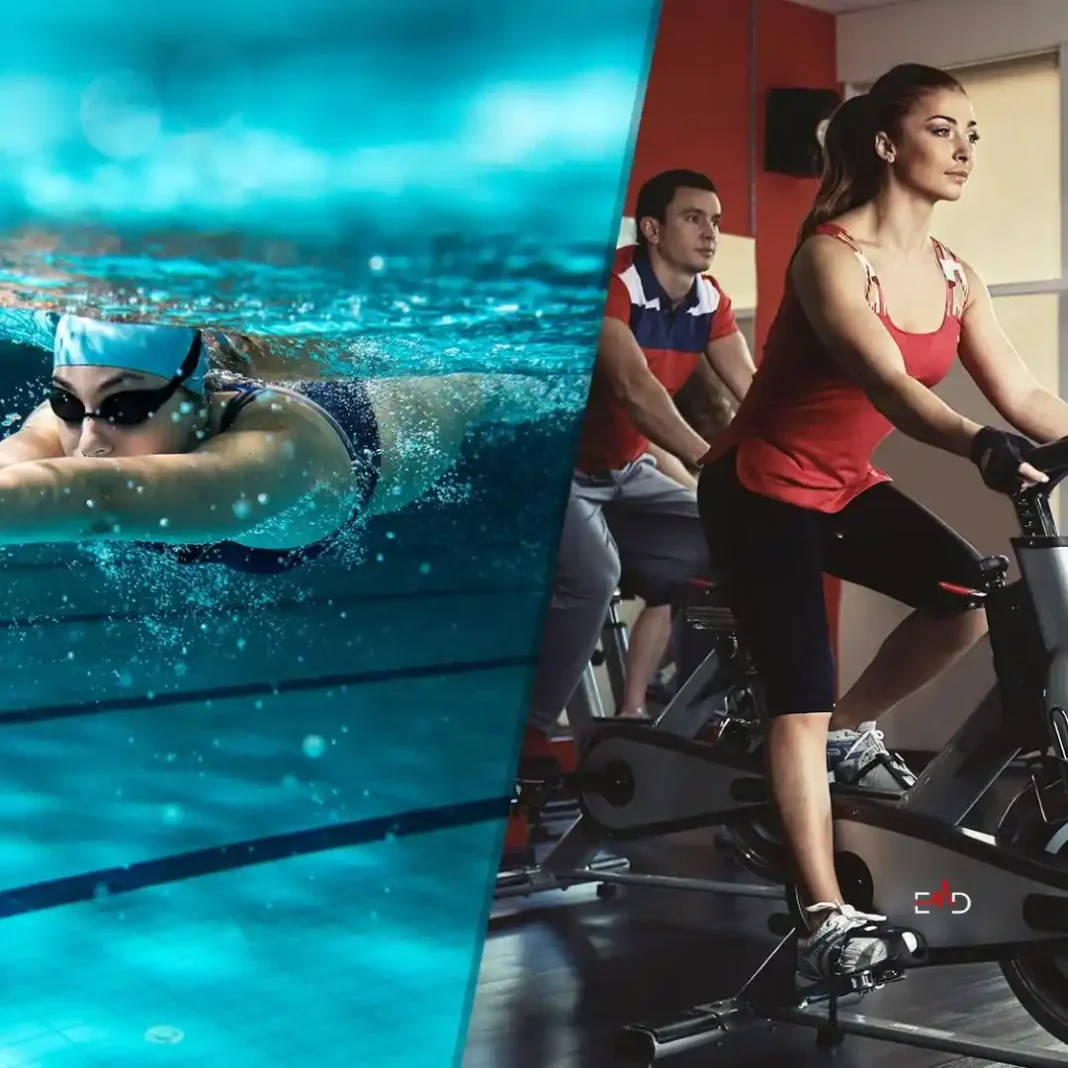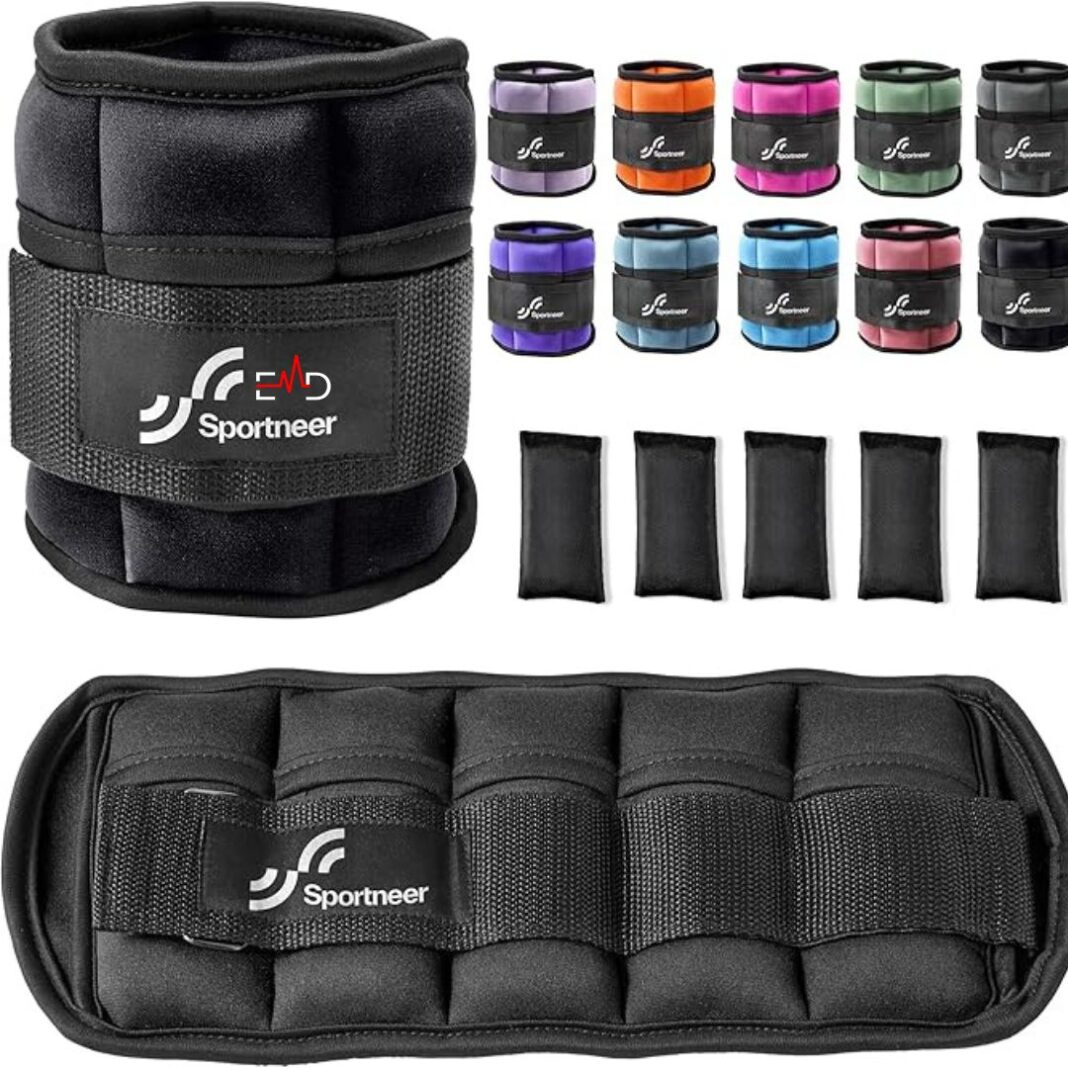Exercise Daily – When it comes to choosing a cardio workout, there are countless options available. However, two of the most popular and effective choices for burning calories and improving overall fitness are swimming and cycling. Both are excellent forms of aerobic exercise that provide numerous benefits, but when it comes to which one is the best for weight loss or cardiovascular health, it can be a tough decision. So, let’s dive into the world of cycling vs swimming and explore how each workout affects your body, your calorie burn, and your overall fitness goals.
The Cycle: A Heart-Pumping Workout
Cycling is one of the most accessible forms of exercise. Whether you are riding outside on a bike ride or pedaling away on a stationary bicycle, cycling provides a full-body cardio workout that works your legs, glutes, hamstrings, and core. It’s a low-impact workout, meaning it is easier on the joints compared to higher-impact activities like running. The rhythmic pedaling motion and the intensity at which you ride determine how many calories you’ll burn per hour.
Cycling also provides cardiovascular benefits, improving your heart and lung capacity. Plus, it strengthens your endurance, which is crucial if you’re training for something like a triathlon. The beauty of cycling lies in its ability to cater to people of all fitness levels. Whether you’re a seasoned cyclist or a beginner, you can adjust your speed and intensity to match your fitness level. And let’s not forget the mental benefits of being outdoors on a bike ride, breathing in fresh air, and enjoying the scenery.

The Pool: A Low-Impact, Full-Body Workout
On the other hand, swimming is an incredibly effective workout that uses almost every muscle group in the body. It’s considered one of the best forms of aerobic exercise, offering an amazing calorie burn while improving cardiovascular fitness. Whether you’re doing the freestyle, backstroke, or butterfly, swimming offers a full-body workout that engages your arms, legs, core, and back. Swimming benefits include toning your entire body, increasing flexibility, and enhancing stamina. Plus, it’s a low-impact exercise that’s gentle on the joints, making it perfect for individuals with joint pain or those recovering from injuries.
Like cycling, swimming is also an excellent way to burn calories. A casual swim can burn up to 400-600 calories per hour, depending on the intensity and the stroke you use. If you push yourself with faster strokes or sprints, you can increase that calorie burn significantly. Swimming can even burn more calories than cycling if you’re an experienced swimmer, as it requires both upper and lower body coordination.

Cycling vs Swimming: Which Burns More Calories?
Let’s break down the calorie burn of both activities. The number of calories you’ll burn during a workout depends on various factors such as your weight, the intensity of the activity, and your overall fitness level.
One hour of swimming can burn anywhere between 400 and 700 calories, depending on your technique and speed. More intense strokes like the butterfly will burn more, while the backstroke and breaststroke tend to be less calorie-intensive.
On the other hand, cycling also burns a significant number of calories. A moderate pace on a bike ride can help you burn around 500-700 calories in an hour. If you’re cycling at a vigorous pace or doing hill climbs, you can burn over 900 calories per hour.
So, when it comes to burning the most calories, swimming might edge out cycling if you push yourself with speed and intensity, but both workouts offer impressive fat loss potential.
The Health Benefits of Cycling and Swimming
Cycling and swimming both come with a wide range of health benefits. These cardiovascular exercises improve your heart health, increase your lung capacity, and reduce the risk of chronic diseases such as heart disease, diabetes, and hypertension.
-
Cycling benefits include improved muscle endurance, especially in the lower body. You’ll also strengthen your glutes, hamstrings, and quads. Regular cycling also boosts your metabolism, making it easier to maintain a healthy weight.
-
Swimming benefits go beyond just muscle toning; it improves your flexibility, reduces stress, and enhances mental clarity. Swimming also works your upper body, which cycling doesn’t engage as much. It’s a full-body workout that promotes balance and agility.
When it comes to cardiovascular fitness, both cycling and swimming provide excellent aerobic training that strengthens the heart and helps with overall fitness. However, swimming offers additional benefits like improving core strength, flexibility, and coordination.
Which is Better for Weight Loss?
If your goal is weight loss, both cycling and swimming offer effective workouts. However, the choice between swimming vs cycling depends on your preferences, fitness level, and available resources.
-
If you’re aiming for fat loss, swimming burns more calories per hour if you perform high-intensity strokes, making it an excellent choice for those who prefer full-body workouts.
-
On the other hand, cycling is more accessible for those who may not have access to a pool or prefer outdoor activities. Cycling can help you burn more calories over time, especially if you enjoy long bike rides and explore new terrains.
Both workouts are effective, but you might find cycling more convenient if you prefer working out outdoors or have access to a stationary bike.

Cycling vs Swimming: Advantages and Disadvantages
Both swimming and cycling come with their own set of advantages and disadvantages:
Cycling:
-
Advantages:
-
It can be done outdoors, providing fresh air and scenic views.
-
Low-impact, gentle on the joints.
-
Great for improving endurance and leg strength.
-
Easier to access if you have a bicycle.
-
-
Disadvantages:
-
Requires a bike and potentially a safe location for outdoor cycling.
-
Limited upper body workout compared to swimming.
-
Swimming:
-
Advantages:
-
A full-body aerobic workout that engages both upper and lower body muscles.
-
Low-impact, great for joint health.
-
Provides mental relaxation and stress relief.
-
No equipment needed other than access to a pool.
-
-
Disadvantages:
-
Requires access to a swimming pool.
-
It can be more challenging for beginners.
-
Not as accessible in areas without public swimming facilities.
-
Making the Choice: Which One is Right for You?
Choosing between swimming and cycling ultimately depends on your personal preferences, fitness goals, and lifestyle. Both activities are fantastic cardio workouts that burn calories, improve cardiovascular health, and promote overall fitness.
If you love being in the water and are looking for a full-body workout that targets both your upper and lower body, swimming might be a better option. If you prefer outdoor exercise and want a low-impact way to improve your endurance and burn calories, then cycling might be the right choice for you.
Conclusion
When it comes to choosing between swimming vs cycling, there’s no clear winner. Both offer great benefits and can help you achieve your weight loss goals and improve your overall fitness. Whether you prefer the rhythm of the water or the freedom of the open road, swimming and cycling are excellent choices for achieving cardiovascular health and burning calories.
FAQs – Swimming vs. Cycling: Which Cardio Suits You?
Q: Can swimming help me burn more calories than cycling?
Yes, swimming can burn more calories per hour than cycling, especially if you use faster strokes or do high-intensity intervals.
Q: Which is better for weight loss: swimming or cycling?
Both swimming and cycling are excellent workouts for weight loss, but swimming provides a full-body workout and can burn more calories per hour if done intensely.
Q: Is cycling or swimming easier on the joints?
Both activities are low-impact, but swimming is generally easier on the joints because it eliminates any weight-bearing activity, making it ideal for people with joint pain.
Q: How long should I swim or cycle for weight loss?
For effective weight loss, aim for at least 30 minutes of moderate to intense aerobic exercise such as cycling or swimming most days of the week.




